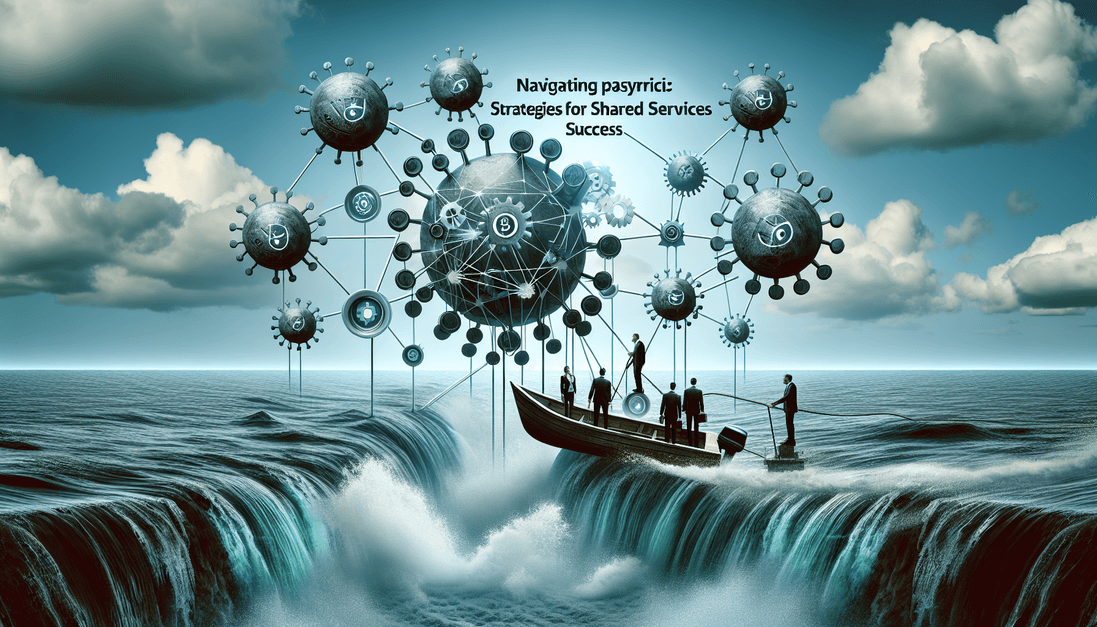Navigating Cloud Operations: Strategies for Shared Services Success
Navigating Cloud Operations: Strategies for Shared Services Success Ever find yourself tangled in the web of cloud operations? You’re not alone. Many teams wrestle with ensuring their shared services are running smoothly and effectively. Whether you’re an associate or a super user in the shared services environment, you know that embracing cloud operations isn’t just a choice; it’s a necessity for navigating today’s fast-paced business landscape. When you think about shared services transformation, the conversation quickly turns to how you can leverage cloud capabilities to enhance process optimization. The Landscape of Cloud Operations Cloud operations are the backbone of shared services these days. They allow teams to share resources, reduce costs, and make processes more efficient. Just think about it: with cloud technology, you can access data from anywhere, collaborate in real time, and even analyze performance metrics at the drop of a hat. This isn’t just theoretical. I’ve seen teams go from working in silos to becoming a cohesive unit, thanks to cloud solutions. Understanding the Challenges But it’s not a walk in the park. Transitioning to cloud operations brings its own set of headaches: Data security concerns Inconsistent user experiences Resistance to change among team members The complexity of managing integrations Cost management and budgeting for new solutions It’s a tall order. But addressing these challenges upfront makes all the difference in ensuring your shared services success. Strategies for Success Here are some strategies that can elevate your approach to cloud operations: 1. Full Buy-In from Leadership First and foremost, you need your leaders on board. Without their support, moving towards cloud solutions can feel like pushing a boulder uphill. Engage them in discussions about the benefits of cloud operations. Showcase success stories from similar organizations. Highlight the cost savings and efficiency improvements. When leadership believes in the vision, the entire organization rallies behind it. 2. Foster a Culture of Adaptability Change is the only constant. And with the rapid pace of technology, it’s crucial to foster a culture that’s adaptable. Encourage continuous learning. Get teams comfortable with experimenting and embracing new tools. Communicate transparently about the changes in processes and systems. People are often resistant to change because it’s unknown. Address those fears head-on and promote a mindset centered around growth. 3. Invest in Training Diving into cloud operations without proper training is like setting sail without a map. Investing in training is non-negotiable: Host workshops and seminars. Provide access to online courses. Encourage mentorship within your organization. When team members feel competent and confident, they can navigate operations more effectively. Making Data Work For You Data is king in cloud operations. But just having data isn’t enough; you must learn to make it work for your shared services: Leverage analytics tools to gain insights into performance. Track KPIs to evaluate shared services efficiency. Utilize feedback to make informed adjustments. Data allows your team to pivot quickly, identify bottlenecks, and celebrate wins along the way. It’s like having a GPS for your cloud operations journey. 4. Prioritize Collaboration One of the best things about cloud operations is how they enhance collaboration. Use platforms that promote teamwork: Utilize shared document tools. Encourage real-time communication through chat tools. Use project management software to keep the team aligned. Collaboration fosters creativity and innovation, essential elements for a thriving shared services team. Cost Management Strategies Cost management can feel like a balancing act. Here are some tactics to keep your operations budget-friendly: Monitor cloud usage to identify and eliminate unnecessary expenses. Negotiate with your cloud service provider for better rates. Consider a hybrid approach to cloud services — using both public and private clouds. Staying on top of costs not only saves bucks but also ensures that you can reinvest in other valuable areas, such as talent development or process optimization. 5. Continuous Improvement Your work doesn’t stop once you implement cloud solutions. Maintain a mindset of continuous improvement: Regularly collect feedback from team members. Evaluate processes and make necessary adjustments. Stay updated with the latest trends and technologies. This proactive approach keeps your shared services nimble and ready for anything that comes your way. Measuring Success How do you know if your cloud operations are on the right track? Measurement is vital. Here are a few metrics to keep your eyes on: Service uptime and reliability Cost savings compared to previous methods Employee satisfaction and engagement levels Process efficiency metrics These KPIs tell you whether your strategies are paying off and where you might need to pivot. Real-World Example Let’s talk about a client who faced huge operational challenges. They had multiple teams working independently in different systems. This led to data silos and increased costs. By adopting a cloud-based collaboration tool, they aligned their operations: Teams could share data in real time. Workflows were streamlined, reducing turnaround times. They saw a 25% increase in efficiency within six months! That’s not just a win for the team — it’s a game-changer for the entire organization. Wrap-Up Navigating cloud operations is not just about the technology. It’s about the people behind it. When you focus on team buy-in, training, collaboration, and continuous improvement, you’re setting your shared services up for success. Every step taken towards optimizing your cloud operations not only elevates the service you provide but also transforms your workplace into a dynamic environment where innovation thrives. Curious for more insights on shared services? Check out THEGBSEDGE for articles on transformation, innovation, and leadership to keep your team ahead of the curve. Remember, shared services transformation isn’t just a destination; it’s a journey. And with the right strategies in place, you can navigate it successfully!
Navigating Cloud Operations: Strategies for Shared Services Success Read More »









